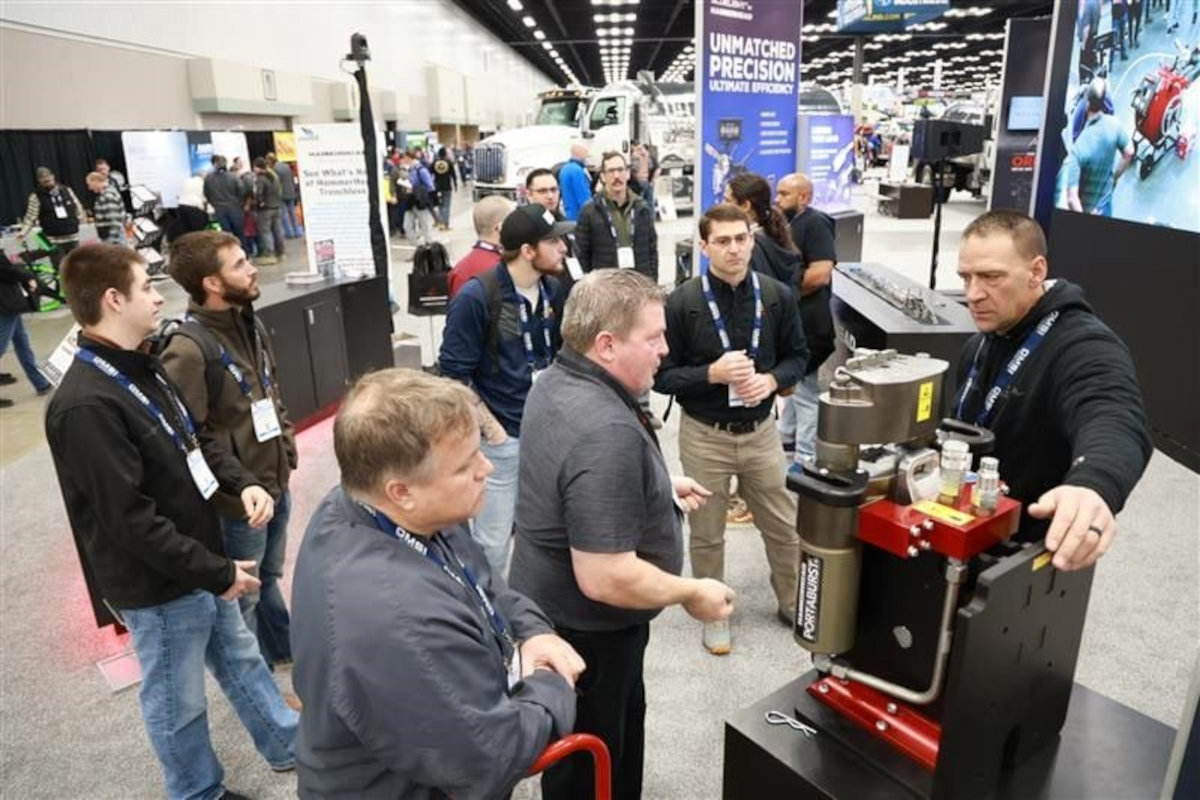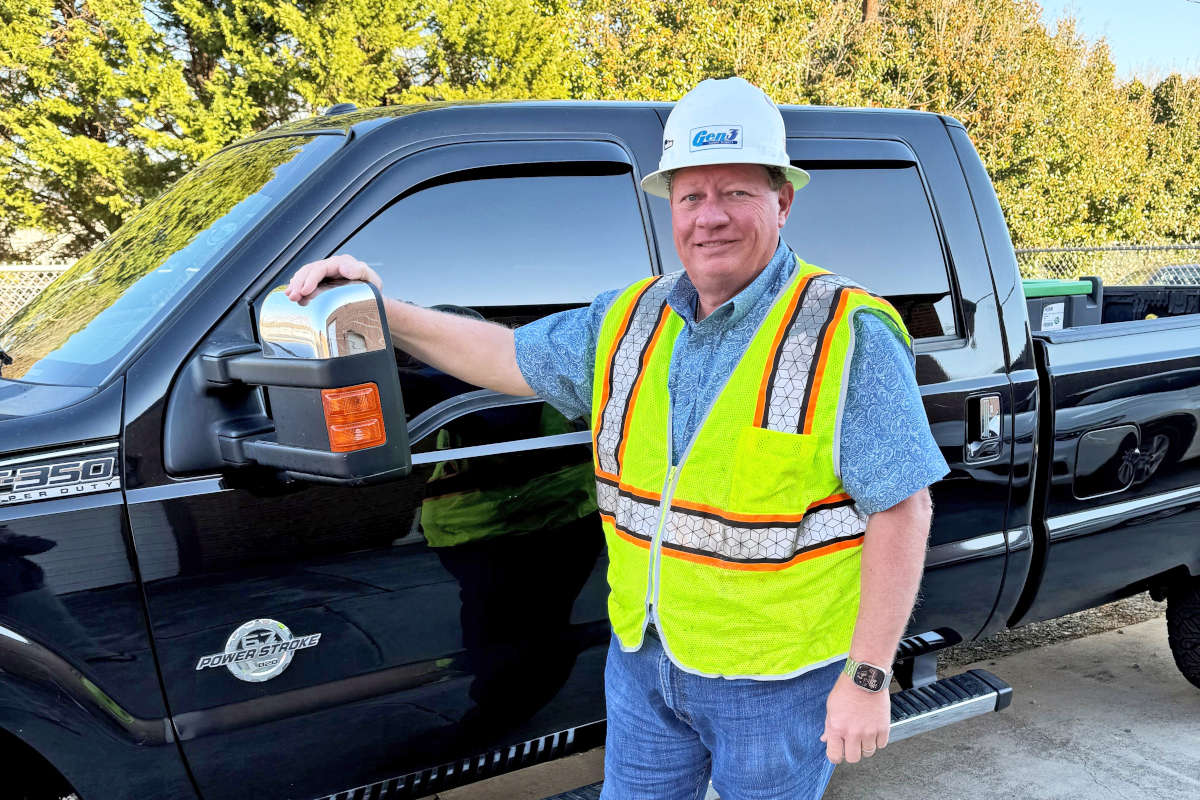
2022 North American Microtunneling Review – HB Trenchless Emerging as Top-Level Microtunneling Provider
This profile on Houston-based HB Trenchless LLC is part of Trenchless Technology’s annual North American Microtunneling Review section, The section highlights companies, recent projects and advancements in the North American microtunneling sector.
While it might be easy to think of HB Trenchless LLC (HBT) as a startup company considering it officially launched in 2019, that doesn’t take into consideration the collective experience of its staff and the amount of work already completed, as well as the experience of its parent company.
HB Trenchless was formed in Houston, in January 2019 by Jon Harper (CEO) and brother Joe Harper (CFO). The formation of HB Trenchless was to complement its parent company, Harper Brothers Construction LLC, and aid in controlling its schedule and work execution on large diameter waterline work with tunnel shafts and trenchless crossings.
Harper Brothers Construction’s work included pipeline projects that oftentimes relied on specialty trenchless subcontractors to complete the work, so the decision was made to bring specialty trenchless and tunneling services in-house.
RELATED: 2022 North American Microtunneling Review – Microtunneling an Overflow Tunnel in Wisconsin
In addition to Jon and Joe Harper, playing key roles in HB Trenchless’ development are vice presidents Tim McQueary, with more than 25 years of utility and civil construction experience, and Julian O’Connell, who began his tunneling career in the United Kingdom in the 1980s. Also on board are Chad Larsen, project manager/equipment manager, who began in the tunneling market in 1999 after serving in the Navy, and Bryan Swanson, project manager/estimator, whose decade-plus of experience runs the gamut of tunneling installations.

Since its formation, HB Trenchless has emerged as a skilled provider of trenchless and tunneling services of all kinds ranging in size from 36 to 144 in. HB Trenchless provides subcontractor services as well as prime contracting services. The company has successfully completed 23,000 ft of tunnel installation, including pipe jacking, microtunneling, rib and lagging, tunnel liner plate and hand mining. HB Trenchless has made a considerable investment in state-of-the-art equipment to meet the most challenging projects and now boasts a large active fleet of tunneling machines, including slurry microtunneling systems.
One of the first projects the upstart company was awarded was the Northeast Transmission Line for the City of Houston and regional partners. The massive overall project involved construction of more than 16 miles of 108-in. water pipeline to accommodate population growth and reduce reliance on pumping of groundwater, which can lead to subsidence issues.
HB Trenchless was contracted to complete five of the nine segments on the line, including the 1,160-ft Smith-to-Lee crossing under I-69. HB Trenchless used a new Herrenknecht 135-in. diameter EPB TBM in combination with pipe jacking to install the 108-in. water line (installed inside of casing pipe) under the highway from January to March 2020. This 1.2-mile segment was completed in October 2020 on schedule and under the original contract amount of approximately $36 million.
HB Trenchless’ first microtunneling project was the Abandonment of Bering and San Felipe Lift Stations project that included approximately 4,600 lf of 48-in. microtunneling, and approximately 2,000 lf of 36-in. microtunneling using Herrenknecht slurry MTBMs to install Hobas pipes.
Currently, HB Trenchless is building microtunnels as part of the Surface Water Supply Project in the Houston area for the West Harris County Regional Water Authority and the North Fort Bend Water Authority. The project is designed to conserve groundwater and reduce subsidence in the region, conveying surface water from Lake Houston through approximately 35 miles of 8-ft diameter pipeline.
HB Trenchless was awarded the $220 million B1/B2 segment, and is partnered with Jay Dee for the B3 segment. The B1/B2 and B3 segments combined total about 14.8 miles of 96-in. diameter pipeline, requiring numerous trenchless installations along the way, and leading to the purchase of a new 106-in. diameter Herrenknecht AVN and a refurbished Lovat M130 series for large-diameter installations.
RELATED: 2022 North American Microtunneling Review – The 2022 North American Microtunneling Job Log
According to McQueary, crews have been able to quickly adapt to microtunneling. “We have personnel who are experienced in tunneling, and then we had them trained by Herrenkecht on our early drives. It took about two drives for crews to feel comfortable operating the machinery and the separation equipment. Our crews now have a comfort level in troubleshooting problems and overcoming issues that may arise. At this point we are able to train crews in-house.”

With the early projects under their belts, HB Trenchless has grown quickly, now employing approximately 120 people and compiling a diverse resume of tunneling projects. And, the market is poised for growth, in Texas and beyond.
“There is a need for water infrastructure projects due to population growth, and typically we’ll see sewer infrastructure projects,” McQueary said.
HB Trenchless prides itself on delivering quality projects for the client in a timely fashion, says McQueary. “We are upwardly mobile and we’re able to move in, set up and get the work under way in a relatively short period of time. Most of our tunnel drives to date have been completed in two to three months. So, the ability to get in and out quickly for the owner has been a big attribute.”
Like many successful contractors, HB Trenchless sees proper planning as the key to completing tunneling projects. “You have to study the project based on your experience and industry standards, and come up with a plan to productively and safely build the project,” McQueary said.
O’Connell added: “Choosing the right equipment for the soil conditions and employing the right shaft construction techniques are also paramount to success. And then, of course, it comes down to the knowledge and experience of the crew.”
Jim Rush is the editorial consultant for Trenchless Technology.




